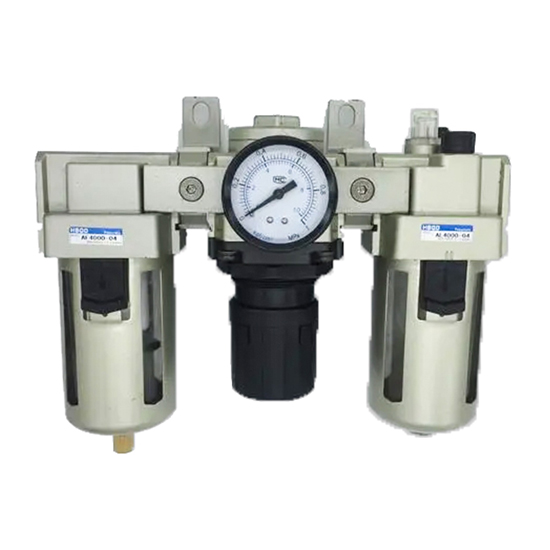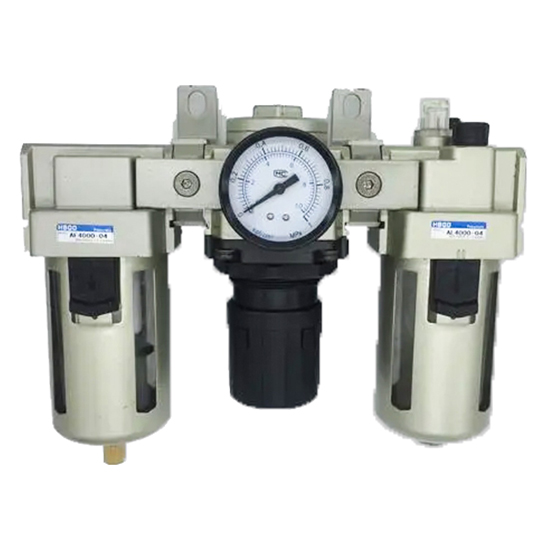Filter Regulator Lubricator
1.Extend Equipment Life: Filters out impurities in the gas.
2.Stabilize Gas Pressure: Prevents pressure fluctuations.
3.Reduce Friction: Lubricator reduces equipment wear.
4.Save Maintenance Cost: Reduces equipment damage.
5.Improve Work Safety: Stable gas pressure reduces safety risks.
6.Environmentally Friendly: Reduces equipment energy consumption.

Every LORZEN Filter Regulator Lubricator has gone through highly controlled conditions to ensure the high quality of your Actuator Accessories.
Product Features:
FRL(filter-regulator-lubricator): FRL is a key component in a pneumatic system, standing for Filter, Regulator, and Lubricator.
Our pneumatic FRL (filter-regulator-lubricator) units provide clean, regulated air to pneumatic systems. The 5-micron filter removes moisture and particulates, enhancing component life. The pressure regulator with gauge enables consistent pneumatic pressure control from 0-125 PSI.
The transparent, sight-dome lubricator delivers an optimal amount of oil for lubrication and sealing. Modular blocks allow flexible configuration as standalone units or integrated banks. Durable polycarbonate bowls resist corrosion. Options include air line kits, specialty filters, and multiple port sizes. With flow rates from 2-100 SCFM, these FRL units suit small actuators to large machinery.
The compact design simplifies installation while delivering contaminant-free, lubricated air for optimal pneumatic system performance. Custom assembly and sizing services available.

Performance Testing
Our state-of-the-art facilities allow rigorous testing to validate function, endurance and environmental protection.
Quality Assurance
100% testing and inspection ensures superior performance of every actuator.
LORZEN Actuator Accessories Are Utilized Across Various Sectors, Including:
Actuator Design
Filter Regulator Lubricator Search
Under normal operating conditions. a safety factor of 20% - 30% is considered for double acting actuators
Example:
Valve torque= 100Nm
Safety torque- 100(1+ 30%) = 130Nm
Air source pressure=5Bar
Compared with the double-acting torque table, the specification of the optional Double-acting actuator is DA105.
- +8613736966003
- sales@lorzval.com
- Lorzen Factory Park, Linyang Industrial District, Oubei Town, Yongjia County, Wenzhou City, Zhejiang Province, China
Filter Regulator Lubricator Related Information
Installation and Maintenance
Installation and Maintenance
The installation and maintenance of a Actuator are relatively straightforward. Here are some basic steps:
Installation: During the installation process, it’s important to ensure the actuator is correctly aligned and secured in the right position. The actuator should be properly interfaced with the driven device (such as a valve or other mechanical component) to ensure accurate and efficient operation.
Maintenance: Maintenance of the actuator typically involves regular inspections and replacement of worn parts. This might include replacing seals, cleaning and lubricating moving parts, and checking and adjusting the control system. In most cases, just carrying out these maintenance steps periodically can ensure long-term reliable operation of the actuator.
Industry Applications/Functional Uses
Industry Applications/Functional Uses
Actuators have a wide range of uses in many different industries and applications. Here are some of the main application areas:
Manufacturing: On automated production lines, these actuators can be used to control a variety of mechanical equipment such as valves, drums, conveyors, etc.
Energy Sector: In the oil, gas, and electricity industries, these actuators can be used to control various types of valves, ensuring efficient distribution and use of energy.
Chemical Industry: In chemical processes, these actuators can be used to precisely control conditions for various chemical reactions, such as temperature, pressure, and flow rate.
Water Treatment: In water treatment facilities, these actuators can be used to control various equipment like pumps, valves, and filters, ensuring effective water treatment.
Food and Beverage Industry: In the production process of food and beverages, these actuators can be used to control various equipment like mixers, ovens, and packaging machines, ensuring efficiency and quality in the production process.
These are just some of the main application areas for Actuators. Thanks to their simple design and operating principle, these actuators can adapt to a variety of different applications and environments.

